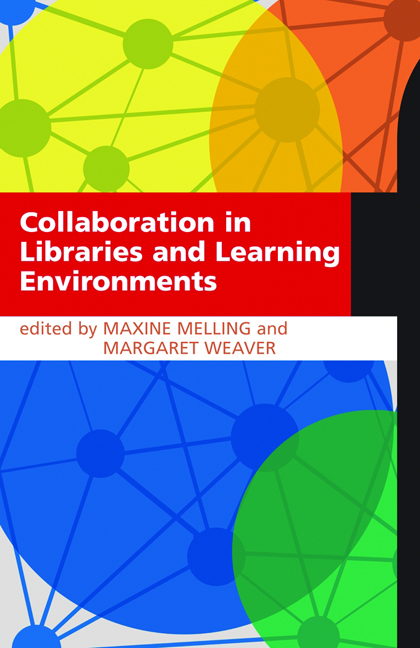Book contents
- Frontmatter
- Contents
- Contributors
- Introduction
- Abbreviations
- 1 The changing higher education context
- 2 Connecting with the student perspective
- 3 Working with professional associations
- 4 Culture, values and change: observations from three consortia in Canada
- 5 Managing complex change collaboratively
- 6 Leadership skills for collaboration: future needs and challenges
- 7 Knowing me … knowing you: the role of technology in enabling collaboration
- 8 Space: changing the boundaries
- 9 Collaborative service provision through super-convergence
- 10 Joint-use libraries and transformational change
- Index
1 - The changing higher education context
Published online by Cambridge University Press: 08 June 2018
- Frontmatter
- Contents
- Contributors
- Introduction
- Abbreviations
- 1 The changing higher education context
- 2 Connecting with the student perspective
- 3 Working with professional associations
- 4 Culture, values and change: observations from three consortia in Canada
- 5 Managing complex change collaboratively
- 6 Leadership skills for collaboration: future needs and challenges
- 7 Knowing me … knowing you: the role of technology in enabling collaboration
- 8 Space: changing the boundaries
- 9 Collaborative service provision through super-convergence
- 10 Joint-use libraries and transformational change
- Index
Summary
Introduction
This chapter will focus on how we prepare for the changing environment(s) for higher education institutions (HEIs), with particular note to libraries and professional support services. I have attempted to scan the current horizon, as all wise clairvoyants do, and consider what it means to be a student or staff member in an HEI so that I can map possible options for future success and highlight implications for collaboration and new ways of working.
Why are we here?
It is always tempting to create a complex picture of where we are and why we exist by focusing on intricate definitions of our current landscape. However, setting off on a brave march by looking at our feet is a sure way to stumble and fall. As a keen walker with particularly poor balance I have learned, to my cost, not to focus on each footfall or to over-think how to avoid each small rock I need to transverse. Instead, by focusing on the distant path ahead, I can avoid painful mistakes and prepare for the big challenges or cliffs. Therefore, rather than spending significant time analysing ‘why we are here’ this chapter focuses on the path ahead.
My simple view of our starting point is that the purpose of higher education is to service, enable and deliver teaching, learning and research.
Information professionals and universities have an exceptional capacity to exploit uncertainties to thrive. In the same ways as professionals in agriculture and manufacturing changed what was possible during their respective revolutions, university library and information services staff have developed services and tools that exploit the advancing information age.
By playing our part in this revolution, we've seen creativity, communication, ingenuity and collaboration in ways that we couldn't have dreamed of. More people now browse university library journals from their homes and offices than ever used the paper copies. Timetables are accessed via the web and travel times to meetings are cut down to a stroll to a video-conferencing suite on campus or a SkypeTM call in the park on a mobile device. We simply can't imagine a time when we were restricted by paper needing to be transported from one place to another – try to think back to times when memos hadn't yet become e-mails and written feedback from conferences was delivered months after the event, as opposed to real-time Twitter feeds.
- Type
- Chapter
- Information
- Collaboration in Libraries and Learning Environments , pp. 1 - 16Publisher: FacetPrint publication year: 2012

